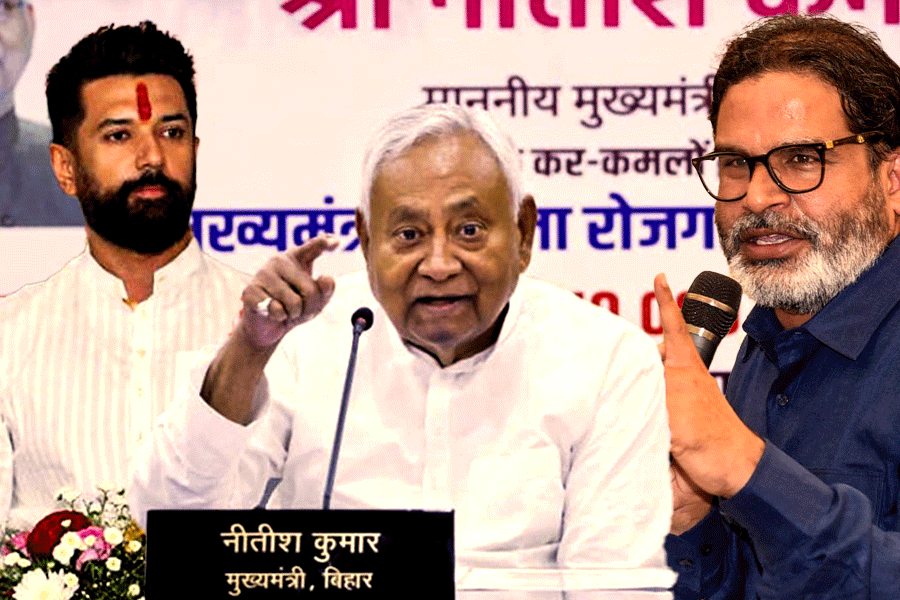 |
Vijaya Kolachalama is not a doctor but the research pursuit of this IIT Kharagpur alumnus may give the world a better way to mend blocked arteries. Coronary heart disease is one of the top killers all over the world and in India nearly 1.5 million die every year from complications arising out of narrowed or blocked arteries.
At the Massachusetts Institute of Technology in the US, Kolachalama and his colleagues are evaluating a new way to treat clogged arteries. The usual way to treat blocked arteries now is to use angioplasty balloons — which can burst a block but cannot prevent the arteries from getting blocked again — and stents (cage-like structures made of metal that can hold an artery open indefinitely). These, however, have several side effects that, in many cases, can turn fatal.
The new research project spearheaded by Kolachalama, who did his BTech in aerospace engineering from IIT-IIT Kharagpur in the early 2000s, is trying to analyse the usefulness of a new treatment that combines the benefits of both the techniques now used and may be less risky. In this approach, a balloon is inflated in the artery for 30 to 60 seconds and a drug coated on the balloon is released to prevent the cells from accumulating and clogging the arteries over time. The study appeared online in the journal Circulation last week.
Kolachalama is a post doctoral student at the lab of Elazer Edelman whose pioneering work led to the development of drug-eluting stents in the late 1990s. He says that angioplasty and the stent helped heart patients immensely as they could avoid an invasive coronary bypass surgery, which had been the standard treatment until the late 1970s. “But each modality has some merits and some drawbacks,” he says.
Angioplasty balloons failed to be a long-term solution because they could not prevent the arteries from collapsing again. So scientists developed stents but these came with their own share of problems. When implanted, they provoke an immune response that can cause cells to accumulate near the stent and clog the artery again. Then the drug-eluting stent was invented, which had a coating of drugs that helped suppress the immune response.
“When the US FDA approved drug-eluting stents for use, many thought it could offer a lasting solution. Though the drug-eluting stent continues to be very popular, it brought a new set of problems,” Kolachalama told KnowHow. “The drugs did suppress the immune response, but they also prevented the wounds (caused when the stent pushes part of the artery to keep it open) from healing,” he says.
As a result, patients with drug-eluting stents need a blood-thinner (aspirin) and anti-coagulating drug (plavix) every day to prevent blood clotting and avert re-narrowing of the artery.
Drug-coated balloons, which are cleared for limited use in humans in Europe, have the potential to be the primary choice of treatment where stents are considered risky or ineffective, says Kolachalama, who originally hails from Hyderabad.
But the technology is still in its early stages. “Until now, people who evaluate such technology could not distinguish hype from promise,” says Edelman.
 |
The MIT team plans to do exactly that. They have not only characterised the properties of the drug-coated balloons but also tried them out in tissues grown in the lab as well as in pigs. “This helped us develop a computer model that would explain how the drug (rapamycin, an immunosuppressant found in drug-eluting stents) gets released and distributed,” says Kolachalama.
The drug-coated balloons are delivered by a catheter and inflated in the narrow arteries for a short period. During that time, the drug (its properties help it to be absorbed easily) is released from the balloon. Computer models helped explain that when the drug is released, some of it sticks to the lining of the blood vessels. Over time, it is released back into the tissue. The model also helped find out how the drug is sustained within the tissue for a longer period.
The model also helped the scientists ascertain how factors like the size of the balloon, the duration of delivery and the composition of the drug coating influence the effectiveness of the technique. “We are actually bringing engineering to medicine by trying to understand the physical principles behind many processes such as diffusion of a drug. Clinicians know whether a drug works or not but we engineers can help them understand how and why it works,” says Kolachalama.
“It is true that knowing how it work will help us use it effectively,” says Shantanu Guha, head of cardiology at Calcutta Medical College. He says many Indian interventional cardiologists already use the drug-coated balloons, made by some European firms.
In future, the MIT researchers plan to examine how blood flow affects drug delivery. They also plan to study a variety of different drugs and drug coating compositions, as well as how the balloons behave in different types of arteries.










